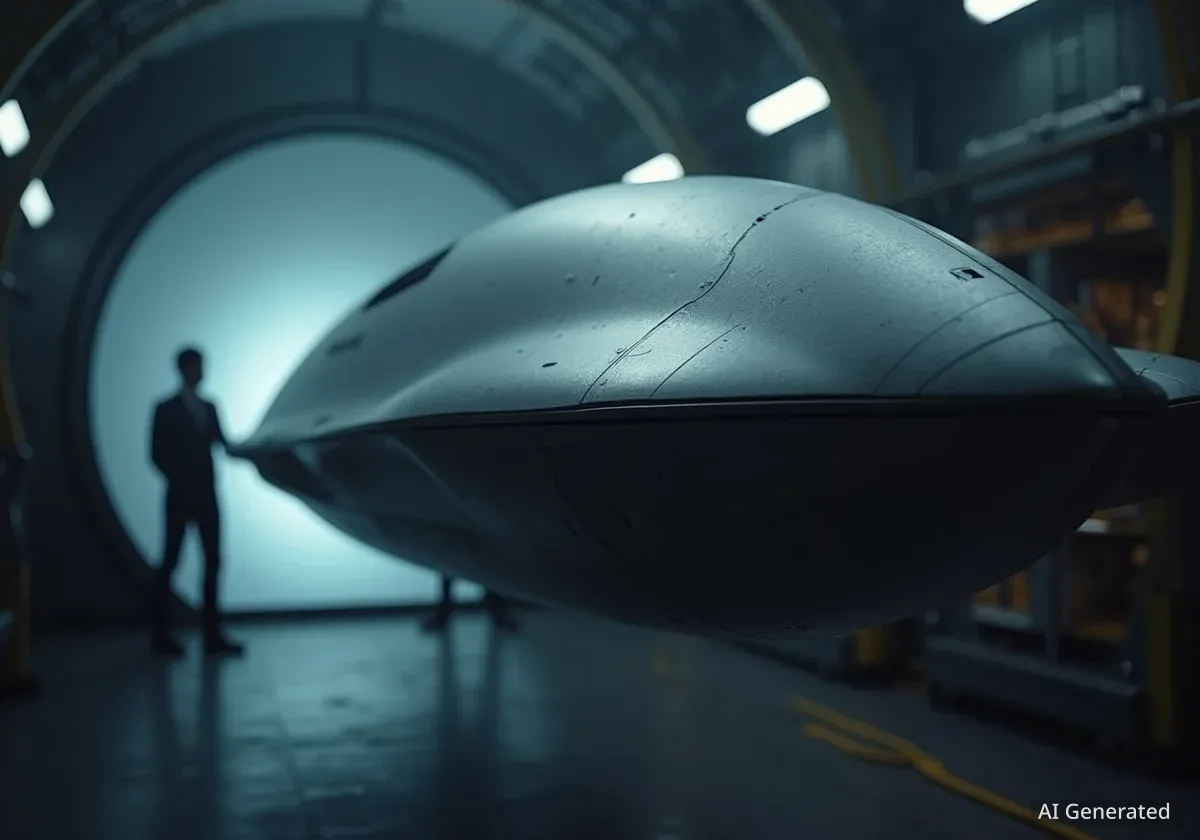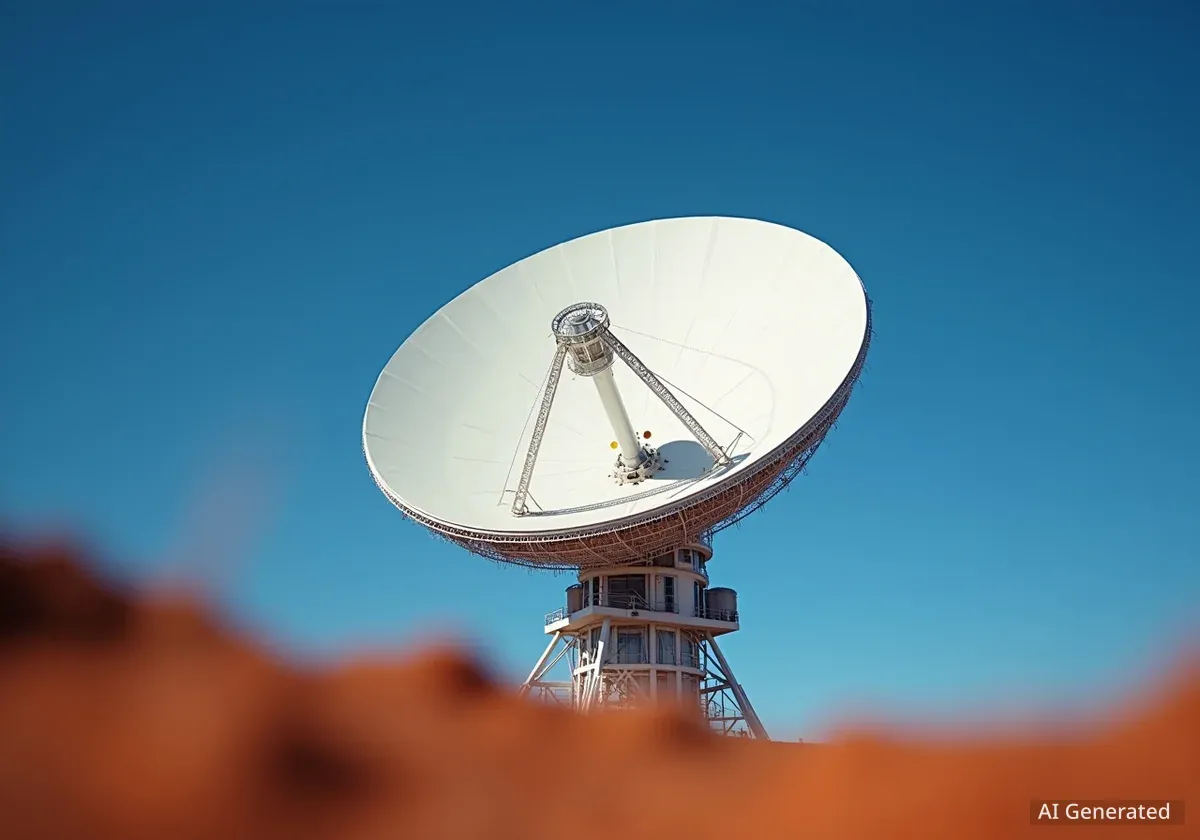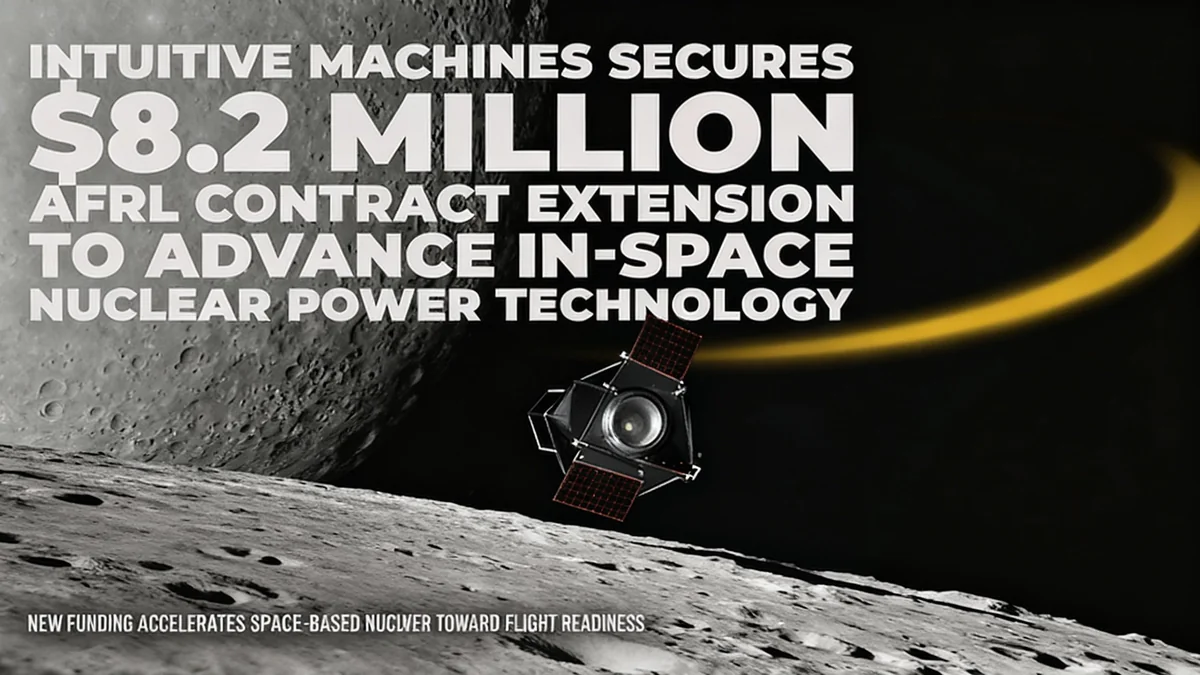Inversion Space, a California-based startup, has revealed its flagship reusable vehicle, named Arc, designed to deliver cargo from low Earth orbit to any location on the planet in under one hour. The company is developing a constellation of these on-demand vehicles to create a new logistics network for both commercial and government clients.
The Arc vehicle is a hybrid cargo capsule and spaceplane measuring four feet in diameter and eight feet in height. It has a payload capacity of 500 pounds (225 kilograms) and is engineered to remain in orbit for up to five years, serving as a pre-positioned storage platform before executing a rapid reentry and landing.
Key Takeaways
- Inversion Space introduced its Arc vehicle, a reusable spacecraft for on-demand cargo delivery from orbit.
- Arc is designed to deliver a 500-pound payload anywhere on Earth within an hour of deorbiting.
- The company is targeting the U.S. military as a primary customer for rapid logistics in remote environments.
- A successful on-orbit test of a smaller prototype, Ray, validated key systems despite a propulsion issue preventing reentry.
- Inversion aims to launch the first Arc mission by the end of 2026 and establish a full constellation by 2028.
A New Approach to Global Logistics
Inversion Space, founded in 2021, is pioneering a novel concept in logistics by leveraging space as a high-ground for rapid global delivery. The core idea is not simply to send cargo to space but to use orbit as a staging area for time-sensitive materials that need to be delivered to Earth.
The company plans to deploy a fleet of Arc vehicles into low Earth orbit. These spacecraft will function as orbital warehouses, holding cargo until a customer requests its return. This model could significantly reduce delivery times for critical supplies compared to traditional air, sea, or land transportation methods.
Arc Vehicle Specifications
- Diameter: 4 feet (1.2 meters)
- Height: 8 feet (2.4 meters)
- Payload Capacity: 500 pounds (225 kilograms)
- Orbital Duration: Up to 5 years
- Delivery Time: Under 60 minutes from deorbit to landing
Once a delivery is initiated, an Arc vehicle will use its onboard deorbit engine to begin its descent. The capsule is built to endure the extreme heat and pressure of atmospheric reentry at hypersonic speeds. The final stage of its journey involves deploying a steerable parachute system to guide it to a precise landing zone.
Focus on National Security and Defense
A primary target market for Inversion's technology is the national security sector. The ability to deliver mission-critical equipment, medical supplies, or other assets to remote or contested areas in less than an hour presents a significant strategic advantage.
The company has explicitly stated its focus on defense applications. In a post on the social media platform X, Inversion Space outlined its vision for military logistics.
“Arc reshapes defense readiness by enabling access to anywhere on Earth in under an hour – allowing for the rapid delivery of mission-critical cargo and effects to austere, infrastructure-limited, or denied environments. This capability establishes space as a new global logistics domain, introducing unprecedented speed, reach, and resiliency for national security.”
This capability could support a range of operations, from humanitarian aid in disaster zones with damaged infrastructure to resupplying special operations forces in locations where conventional logistics are not feasible. The autonomous nature of the Arc vehicle and its parachute landing system means it does not require a runway, further expanding its operational flexibility.
The Rise of Responsive Space
Inversion's concept aligns with a broader push within the U.S. Department of Defense toward "responsive space" and "tactically responsive launch." These initiatives aim to develop the ability to rapidly deploy and utilize space assets to meet immediate battlefield needs, moving away from the long planning cycles traditionally associated with space missions.
Lessons from the Ray Demonstrator Mission
Before unveiling Arc, Inversion Space gained valuable experience from its first test mission. In January, the company launched a smaller demonstration vehicle named Ray aboard a SpaceX Transporter-12 rideshare mission. The primary goal was to test the vehicle's core systems in the harsh environment of space.
According to the company, the Ray mission was a significant success in terms of technology validation. It served as a testbed for many of the key components that will be used in the larger Arc vehicle. Notably, nearly all the spacecraft's systems were developed in-house by a small team of just 25 people, demonstrating the company's agile engineering capabilities.
A Propulsion System Malfunction
While the on-orbit testing was successful, the mission did not conclude with a reentry as originally planned. Inversion reported that Ray experienced a malfunction that prevented its return to Earth.
In a public statement, the company provided details on the issue. “Our first spacecraft, Ray, has completed its mission on-orbit – serving as an extremely successful testbed for validating key technologies despite not attempting re-entry due to an on-orbit short circuit in a component preventing our deorbit engine from igniting,” the statement explained.
Despite this setback, the data gathered from Ray's operational systems in orbit has been crucial for refining the design of the Arc vehicle. The company is incorporating the lessons learned from the short circuit to ensure greater system redundancy and reliability in its future spacecraft.
Future Ambitions and Production Goals
With the design of Arc finalized and informed by real-world flight data, Inversion Space has set an ambitious timeline. The company is targeting the end of 2026 for the first launch of its full-scale Arc vehicle. This mission will be a critical step in proving the complete end-to-end delivery system, including a successful atmospheric reentry and landing.
Looking further ahead, Inversion's plans are even more expansive. The startup aims to ramp up production to build hundreds of its reusable vehicles per year. This high production rate is essential for its ultimate goal: establishing a fully operational constellation of cargo-laden reentry spacecraft by 2028.
If successful, this constellation would create a persistent, on-demand logistics network in orbit, ready to serve a variety of customers. Beyond its initial focus on defense, this technology could have applications in commercial sectors, such as delivering critical components for manufacturing, returning scientific experiments from space, or providing rapid medical supplies globally.





